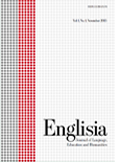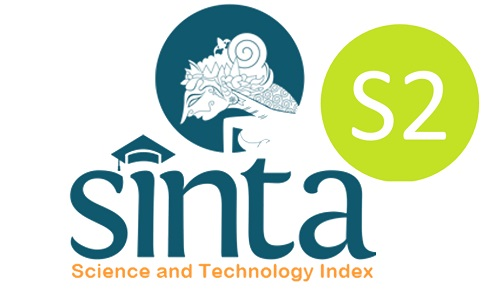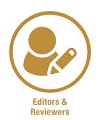AN ANALYSIS ON THE ADVANTAGES OF COOPERATIVE LEARNING APPROACH IN TEACHING WRITING
DOI:
https://doi.org/10.22373/ej.v1i1.143Keywords:
Cooperative learning approach, writingAbstract
This article aims to explain an analysis of cooperative learning approach advantages in teaching writing. Accordingly, learning writing by using cooperative learning makes the students easier in developing the ideas to write. This approach is more than just putting students into groups, but the students can work together, share information, and they are responsible for completion of the tasks in group as well. Besides, in this approach, the students can transfer their information and knowledge to the others and help each other in getting the ideas to develop in written communication during teaching-learning process.Downloads
References
Andrian Doff, Teaching English (Australia: Cambridge University, 1994), p. 9.
Arthur W. Heilment. Timothy R. Blair and William H. Rupley, Principles and Practices of Teaching Reading 6th ed. (Ohio, Charles, E. Merrill publishing co, 1991), p.489.
Bosworth, K.,& Hamilton, S.J, Collaborative Learning: Underlying Process and Effective Technique,1994 in Oon- Seng Tan. Enhancing Thinking through Problem-Based Learning Approach: International Perspective, foreword by George Watson, Ph. D (Unidel Professor of physics and Astronomy University of Delaware: By Thomson learning, 2004), p.134.
Brenda D. Smith, Breaking through College Reading 4th ed., (Harper Collin: College Publishers, 1995),p. 23.
David Stepherd, Comprehensive High School Reading Methods, (Columbus Ohio, A Bell and Howel Company, 1978), p.18.
Diane Larsen–freeman. Technique and Principle in Language Learning Teaching (New York: Oxf ord Universty press,2000), p.16.
Donald R. Cruickshank, Deborah Bainer Jenkins, and Kim k. Metcalf, The Act Of Teaching 4th. ed., (Mcgraw: Hill companies, 2006), p. 238.
Evely Jacob, Cooperative Learning in Context Educational Innovation In Every Day Classroom, (New York State University: New York press, 1999), p.5.
Franciose Grellet, Developing Reading Skill: A practical guide for Reading Comprehension Exercise, (Cambridge: Cambridge University, 1986), p.7.
Harel Y, Teacher Talk in The Cooperative Learning Classroom, .In C. Kesser (ed.), Cooperative Language Learning: A Teacher’s Resource Book,1992: in Jack C. Richards and Theodore S. Rodgers, Approaches and Methods in Language Teaching 2nd( New York: Cambridge University Press, 2001), p. 199.
Jack C Richards and Theodore S Rodger, Approaches and Method ..…â€, p. 192.
Jack C. Richards and Charles Lockhart, Reflective Teaching in Second Language Classroom, (New York: Cambridge University press, 1996), p. 103.
Jeremy Harmer, The Practice of English Language Teaching 3rd ed., (Longman, 2001), p .41.
Lois A. Hirst and Christy Slavik, Cooperative Approach to Language Learning, (Online), http://jan.ucc.nau.edu/~jar/NALI10.html, accessed on Tuesday, 27th 2009.
Nurs and Hough, Reading and English second Language Students, 1992, p. 16.
Olsen, R., and S. Kagan, About Cooperative learning. In C. Kessler (ed.),Cooperative Lenguage Learning : A Teacher’s Recource Book,1992 in Jack C Richards and Theodore S Rodger, Approaches and Method in Language Teaching (Cambridge: Cambridge Language Teaching Library, 2001), p. 196.
R. Johnson and E. Holubec, Cooperative learning in the classroom,1994, in Jack C Richards and Theodore S Rodger, Approaches and Method in Language Teaching (Cambridge: Cambridge Language Teaching Library, 2001), p. 195.
Richard M Felder, Cooperative learning in Technical Course: procedures, pitfalls, payoffs (North coralina: State university and Rebecca Breth/http://www.Stuygs.Net /cooplearn, November 15th 2008, p. 17.
Sally Burgess, Katie Head, How to Teach for Exam in serial Editor Jeremy Harmer (Longman personal education limited, 2005), p. 27.
Downloads
Published
Issue
Section
License
Proposed Policy for Journals That Offer Open Access
Authors who publish with Englisia journal agree to the following terms:
- Authors retain copyright and grant the journal right of first publication with the work simultaneously licensed under a Creative Commons Attribution License that allows others to share the work with an acknowledgement of the work's authorship and initial publication in this journal.
- Authors are able to enter into separate, additional contractual arrangements for the non-exclusive distribution of the journal's published version of the work (e.g., post it to an institutional repository or publish it in a book), with an acknowledgement of its initial publication in this journal.
- Authors are permitted and encouraged to post their work online (e.g., in institutional repositories or on their website) prior to and during the submission process, as it can lead to productive exchanges, as well as earlier and greater citation of published work (See The Effect of Open Access).









